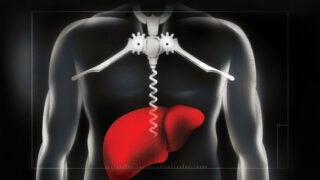
The study will focus on the patterns and effects of chronic stress on the health of LGBT youth. (Photo/iStock)
Understanding the causes of stress on health of gay or lesbian adolescents
USC researchers to recruit 1,500 teens in all 50 states and then follow them for three years
Chronic stress is a known factor for poor physical and mental health, including depression, anxiety, substance abuse and suicide. And while stress is often a part of adolescence, research also has demonstrated that adolescents who identify as lesbian, gay or bisexual experience.
That’s because they are part of a marginalized community, said Jeremy Goldbach, assistant professor at the USC Suzanne Dworak-Peck School of Social Work.
“Gay or lesbian adolescents may fear disclosure or family rejection, which are additional stressors,” said Goldbach, an expert on issues in the LGBT community.
He and Sheree M. Schrager, director of research for Children’s Hospital Los Angeles’ Division of Hospital Medicine, are co-principal investigators in one of the first systematic, longitudinal studies that seeks to understand when sexual minority adolescents experience stress, how it affects their health and how the stress can be treated or prevented. The researchers recently received a $3.7 million grant from the National Institute on Minority Health and Health Disparities to address those questions.
Study over time
The researchers plan to recruit 1,500 youth, 14 to 17 years old, who reflect a diversity of race/ethnicity, religion and gender and come from urban and rural environments in all 50 states, and then follow them for three years.
We want to see how stress changes over time, to see if there are patterns and whether any patterns have an impact on health.
Jeremy Goldbach
“We want to see how stress changes over time, to see if there are patterns and whether any patterns have an impact on health,” Goldbach said. “We hope to understand more about the best timing for interventions: When would they be most effective? If we’re able to identify when they’re most needed, then we may be able to say when there is a likelihood for good outcomes.”
The study follows an earlier National Institute on Minority Health and Health Disparities-funded study in which Goldbach and Schrager developed the first measure of sexual minority stress. The Sexual Minority Adolescent Stress Inventory is the first tool to measure minority stress among lesbian, gay and bisexual youth. They will use it in the new study to discover the underlying causes of stress, when stress rises and diminishes, and the resulting health risks. Then the findings will be used to develop effective behavioral interventions to improve health outcomes for this vulnerable population.
“I think it’s important to understand how discrimination affects health,” Goldbach said. “If we can establish that there’s a causal link, it can guide both policies and clinical interventions, because if we have a better understanding of the cause of problems then that will help us identify how to fix them.”



